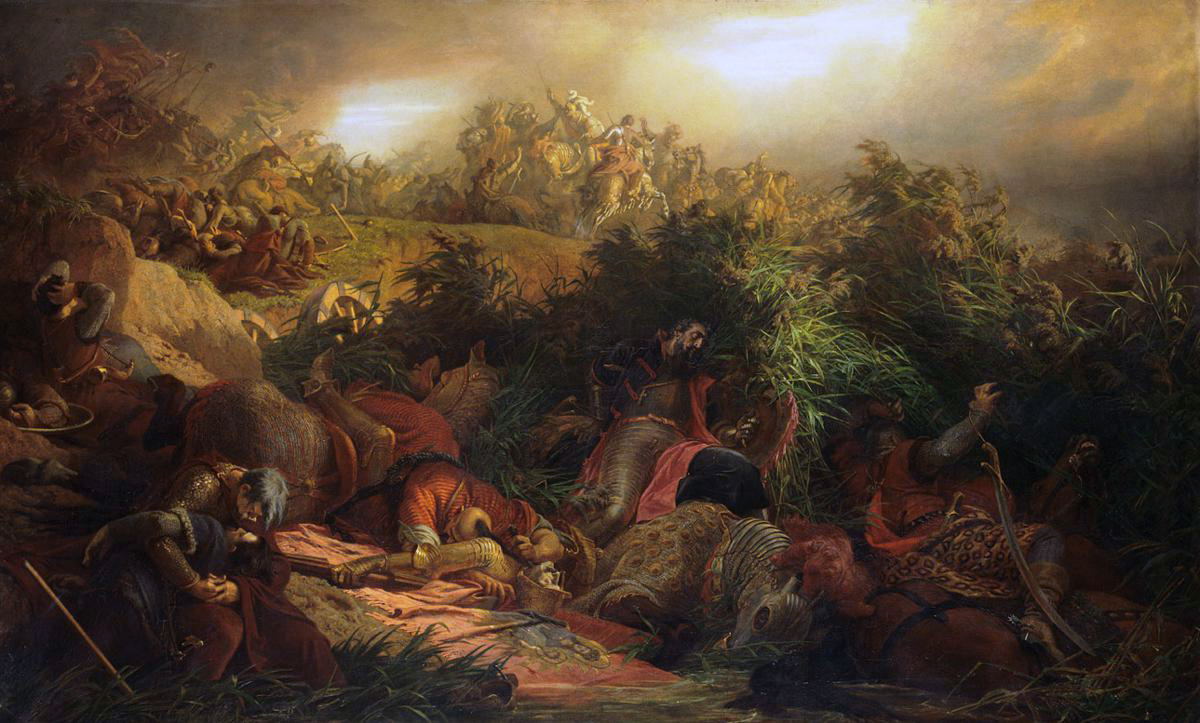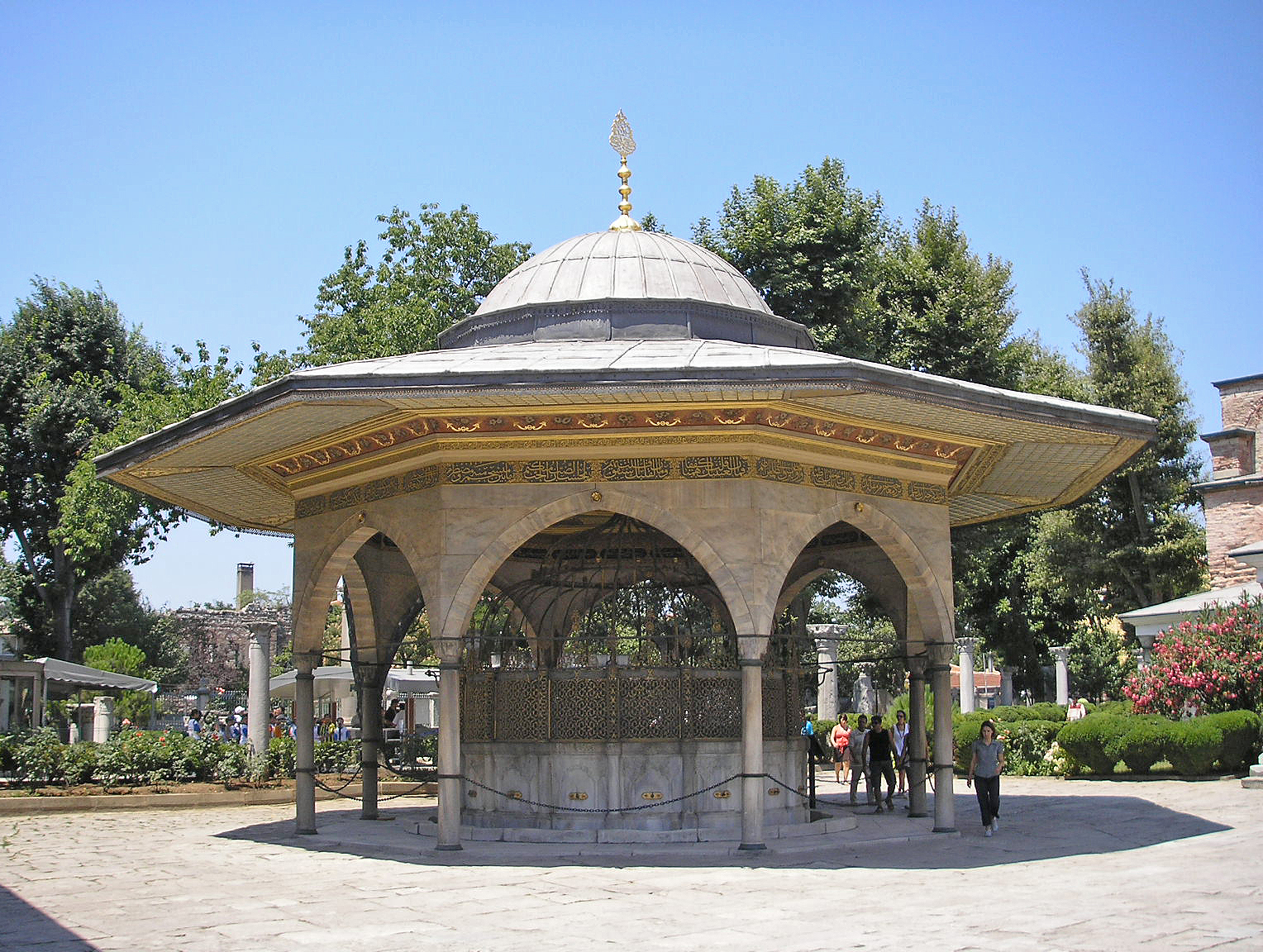|
Mevlâna Museum
The Mevlâna Museum (), in Konya, Turkey, started life as the dervish lodge ( Tekke) of the Mevlevi order, better known as the whirling dervishes. It houses the mausoleum of Jalal ad-Din Muhammad Rumi (Turkish: Celaleddin-i Rumi), a Persian Sufi mystic. History Sultan 'Ala' al-Din Kayqubad, the Seljuk sultan who had invited Mevlâna to Konya, gave his rose garden as a burial place for Rumi's father, Baha' ud-Din Walad (also written as Bahaeddin Veled), who died on 12 January 1231. When Mevlâna died on 17 December 1273 he was buried next to his father. Mevlâna's successor Hüsamettin Çelebi decided to build a mausoleum (''Kubbe-i-Hadra'') over the grave of his master. The Seljuk construction, under architect Badr al-Din Tabrizi, was completed in 1274. The construction costs were met by Gurju Khatun, the wife of the Seljuk Emir Suleiman Pervâne, and Emir Alameddin Kayser. The cylindrical drum of the dome originally rested on four pillars. The dome is covered with turquoi ... [...More Info...] [...Related Items...] OR: [Wikipedia] [Google] [Baidu] |
Islam
Islam is an Abrahamic religions, Abrahamic monotheistic religion based on the Quran, and the teachings of Muhammad. Adherents of Islam are called Muslims, who are estimated to number Islam by country, 2 billion worldwide and are the world's Major religious groups, second-largest religious population after Christians. Muslims believe that Islam is the complete and universal version of a Fitra, primordial faith that was revealed many times through earlier Prophets and messengers in Islam, prophets and messengers, including Adam in Islam, Adam, Noah in Islam, Noah, Abraham in Islam, Abraham, Moses in Islam, Moses, and Jesus in Islam, Jesus. Muslims consider the Quran to be the verbatim word of God in Islam, God and the unaltered, final revelation. Alongside the Quran, Muslims also believe in previous Islamic holy books, revelations, such as the Torah in Islam, Tawrat (the Torah), the Zabur (Psalms), and the Gospel in Islam, Injil (Gospel). They believe that Muhammad in Islam ... [...More Info...] [...Related Items...] OR: [Wikipedia] [Google] [Baidu] |
Mustafa Kemal Atatürk
Mustafa Kemal Atatürk ( 1881 – 10 November 1938) was a Turkish field marshal and revolutionary statesman who was the founding father of the Republic of Turkey, serving as its first President of Turkey, president from 1923 until Death and state funeral of Mustafa Kemal Atatürk, his death in 1938. He undertook sweeping Atatürk's reforms, reforms, which modernized Turkey into a secularism in Turkey, secular, industrializing nation. Ideologically a Secularism, secularist and Turkish nationalism, nationalist, Atatürk's reforms, his policies and socio-political theories became known as Kemalism. He came to prominence for his role in securing the Ottoman victory at the Battle of Gallipoli (1915) during World War I. Although not directly involved in the Armenian genocide, his government would later grant immunity to remaining perpetrators. Following the defeat of the Ottoman Empire after World War I, he led the Turkish National Movement, which resisted the Empire's partition ... [...More Info...] [...Related Items...] OR: [Wikipedia] [Google] [Baidu] |
Kemane
Kemane (Macedonian: ќемане, ; ) is a bowed string instrument traditionally used in the Balkans and Anatolia. It is the Macedonian and southern Serbian version of the kemenche, it is very similar to the violin or viola and related to the Bulgarian gadulka. The kemane also resembles the Greek instrument lyre. The instrument is usually used to accompany folk music and singing, particularly epic poetry, and is rarely used as a solo instrument. Varieties The kemane can be made in various forms. The length varies between , their shape can be either straight or bent in a curved shape. Older kemane's were made by hacking holes in the instrument in which were inserted horse tail hairs, however the modern kemane's strings are attached to a wooden headstock, similar to that of a violin. It is prepared out of one piece of wood (walnut, maple, or other) with three structural parts: the body (''krtuna''), neck (''shija''), and the headstock (''glava''). The strings are set at different ... [...More Info...] [...Related Items...] OR: [Wikipedia] [Google] [Baidu] |
Kemence
Kemence (Slovakian: ''Kamenica)'' is a village in Szob District, Pest county, Hungary Hungary is a landlocked country in Central Europe. Spanning much of the Pannonian Basin, Carpathian Basin, it is bordered by Slovakia to the north, Ukraine to the northeast, Romania to the east and southeast, Serbia to the south, Croatia and .... References Populated places in Pest County {{Pest-geo-stub ... [...More Info...] [...Related Items...] OR: [Wikipedia] [Google] [Baidu] |
Sama (Sufism)
Sama (; ) is a Sufi ceremony performed as part of the meditation and prayer practice dhikr. Sama means "listening", while dhikr means "remembrance".During, J., and R. Sellheim. "Sama" Encyclopedia of Islam, Second Edition. Ed. P. Bearman, T. Bianquis, C. E. Bosworth, E. Van Donzel and W. P. Heinrichs. Brill Online, 2010. These performances often include singing, playing instruments, dancing, recitation of poetry and prayers, wearing symbolic attire, and other rituals. Sama is a particularly popular form of worship in Sufism. In 2005, UNESCO confirmed the "Mevlevi Sama Ceremony" of Turkey as one of the Masterpieces of the Oral and Intangible Heritage of Humanity. Etymology The term sama stems from the root-verb meaning ''acceptance by tradition'', from which are derived the words سَمْع (''sam‘un'') and اِسْتِمَاع (''’istimā‘un'', listening), often paired with نَقْل (''naqlun'') and تَقْلِيد (''taqlīdun'', tradition). It may have been in use ... [...More Info...] [...Related Items...] OR: [Wikipedia] [Google] [Baidu] |
Suleiman The Magnificent
Suleiman I (; , ; 6 November 14946 September 1566), commonly known as Suleiman the Magnificent in the Western world and as Suleiman the Lawgiver () in his own realm, was the List of sultans of the Ottoman Empire, Ottoman sultan between 1520 and his death in 1566. Under his administration, the Ottoman Empire ruled over at least 25 million people. After succeeding his father Selim I on 30 September 1520, Suleiman began his reign by launching military campaigns against the Christendom, Christian powers of Central and Eastern Europe and the Mediterranean; Siege of Belgrade (1521), Belgrade fell to him in 1521 and Siege of Rhodes (1522), Rhodes in 1522–1523, and at Battle of Mohács, Mohács in 1526, Suleiman broke the strength of the Kingdom of Hungary in the Middle Ages, Kingdom of Hungary. Presiding over the apex of the Ottoman Empire's economic, military, and political strength, Suleiman rose to become a prominent monarch of 16th-century Europe, as he personally led Arm ... [...More Info...] [...Related Items...] OR: [Wikipedia] [Google] [Baidu] |
Selim I
Selim I (; ; 10 October 1470 – 22 September 1520), known as Selim the Grim or Selim the Resolute (), was the List of sultans of the Ottoman Empire, sultan of the Ottoman Empire from 1512 to 1520. Despite lasting only eight years, his reign is notable for the enormous expansion of the Empire, particularly his Ottoman–Mamluk War (1516–1517), conquest between 1516 and 1517 of the entire Mamluk Sultanate of Egypt, which included all of the Levant, Hejaz, Tihamah and Egypt itself. On the eve of his death in 1520, the Ottoman Empire spanned about , having grown by seventy percent during Selim's reign. Selim's conquest of the Middle Eastern heartlands of the Muslim world, and particularly his assumption of the role of guardian of the Hajj, pilgrimage routes to Mecca and Medina, established the Ottoman Empire as the pre-eminent Muslim state. His conquests dramatically shifted the empire's geographical and cultural center of gravity away from the Balkans and toward the Middle East ... [...More Info...] [...Related Items...] OR: [Wikipedia] [Google] [Baidu] |
Sadirvan
A shadirvan (, , ) is a type of fountain that is usually built in the courtyard or near the entrance of mosques, caravanserais, khanqahs, and madrasas, with the main purpose of providing water for drinking or ritual ablutions to several people at the same time, but also as decorative visual or sound elements. Shadirvans are Persian in origin and, with a curtain or drape, were originally placed in the tents of rulers or on the balconies of palaces. They are a typical element of Ottoman architecture. See also * Cantharus, a similar fountain in Christian places of worship * Howz In traditional Persian architecture, a howz () is a centrally positioned symmetrical axis Reflecting pool, pool. If in a traditional house or private courtyard, it is used for bathing, aesthetics or both. If in a sahn of a mosque, it is used for ... * Sebil or sabil, public water fountain in Islamic countries References External links {{Authority control Fountains Islamic architectural e ... [...More Info...] [...Related Items...] OR: [Wikipedia] [Google] [Baidu] |
Sema
Sama (; ) is a Sufi ceremony performed as part of the meditation and prayer practice dhikr. Sama means "listening", while dhikr means "remembrance".During, J., and R. Sellheim. "Sama" Encyclopedia of Islam, Second Edition. Ed. P. Bearman, T. Bianquis, C. E. Bosworth, E. Van Donzel and W. P. Heinrichs. Brill Online, 2010. These performances often include singing, playing instruments, dancing, recitation of poetry and prayers, wearing symbolic attire, and other rituals. Sama is a particularly popular form of worship in Sufism. In 2005, UNESCO confirmed the "Mevlevi Order, Mevlevi Sama Ceremony" of Turkey as one of the Masterpieces of the Oral and Intangible Heritage of Humanity. Etymology The term sama stems from the root-verb meaning ''acceptance by tradition'', from which are derived the words سَمْع (''sam‘un'') and اِسْتِمَاع (''’istimā‘un'', listening), often paired with نَقْل (''naqlun'') and تَقْلِيد (''taqlīdun'', tradition). It may ha ... [...More Info...] [...Related Items...] OR: [Wikipedia] [Google] [Baidu] |
Murad III
Murad III (; ; 4 July 1546 – 16 January 1595) was the sultan of the Ottoman Empire from 1574 until his death in 1595. His rule saw battles with the Habsburg monarchy, Habsburgs and exhausting wars with the Safavid Iran, Safavids. The long-independent Saadi Sultanate, Morocco was for a time made a vassal of the empire but regained independence in 1582. His reign also saw the empire's expanding influence on the eastern coast of Africa. However, the empire was beset by increasing corruption and inflation from the New World which led to unrest among the Janissary and commoners. Relations with Elizabethan England were cemented during his reign, as both had a common enemy in the Spanish Empire, Spanish. He was also a great patron of the arts, commissioning the ''Siyer-i Nebi, Siyer-i-Nebi'' and other illustrated manuscripts. Early life Born in Manisa on 4 July 1546, Şehzade Murad was the oldest son of Şehzade Selim II, Selim and his powerful wife Nurbanu Sultan. He received a good ... [...More Info...] [...Related Items...] OR: [Wikipedia] [Google] [Baidu] |






